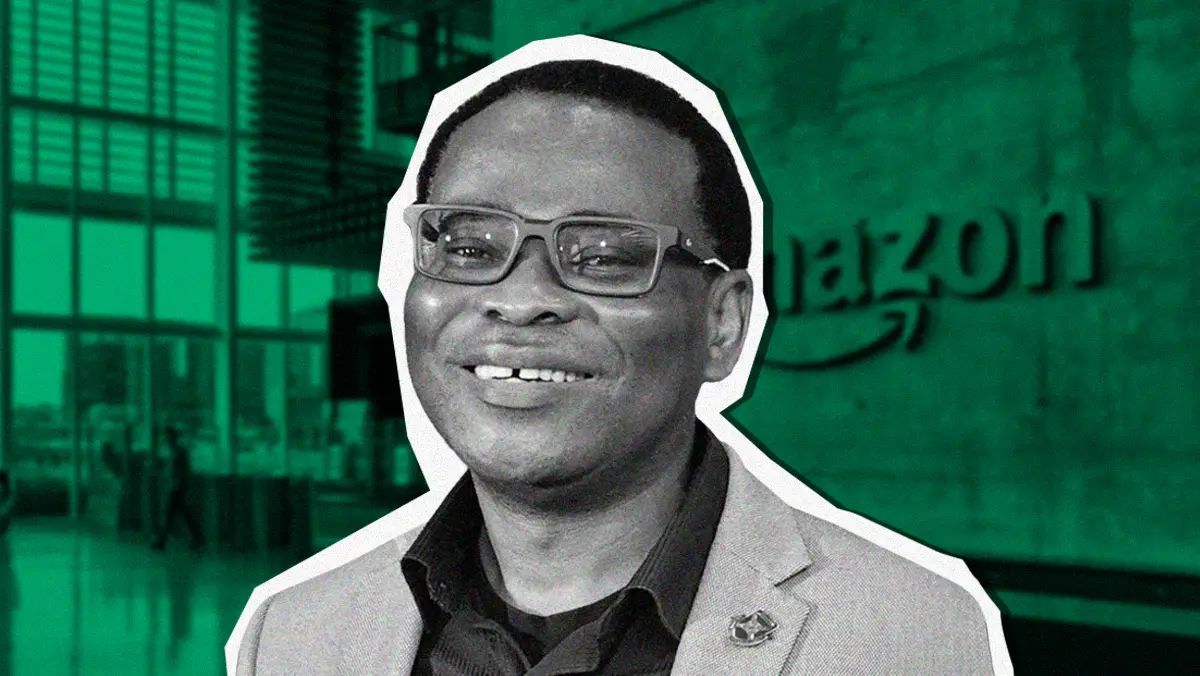
As AI transforms the future of work, expert evaluation is needed to determine which tasks should remain human-driven in high-stakes environments.
Amazon HR Partner Mawuli Adzasoo suggests redesigning work to incorporate AI, allowing employees to take on more valuable tasks.

*All opinions in this article are Mawuli Adzasoo’s own, and do not represent those of his employer
AI anxiety won’t be cured with corporate platitudes or reassuring memos. The only real antidote is a fundamental redesign of the work itself. For Mawuli Adzasoo, an HR Partner at Amazon supporting over 2,000 associates, the AI conversation needs less fear and more action.
Redesign, don’t reassure: “The way to give people assurance is to actively add value to what they do,” says Adzasoo. “Expand the responsibilities of the role so the person is doing more than just the basics. This ensures that even if AI takes over routine tasks, they still have something extra—something more valuable—to do.”
For Adzasoo, redesigning work is the real reassurance. It’s a mindset that repositions AI as an enabler, not a threat. When employees see their roles growing—not shrinking—alongside automation, they’re far more likely to embrace the tools instead of fear them.
A human firewall: Automation isn’t a switch to flip. Adzasoo warns against one-size-fits-all thinking, especially in high-stakes roles where human judgment still matters. “You need an expert to come in and evaluate precisely which tasks can be assigned to AI and which absolutely require human intervention,” he says. “You will always need that human judgment to make certain high-level, strategic decisions.” That oversight isn’t just technical, it’s cultural. Not every team or task is equally ready for automation, and knowing where human nuance belongs is key to building trust.
Liberation by automation: It’s a philosophy already in practice at companies like Amazon, where the goal isn’t just automation for efficiency’s sake, but to liberate employees for higher-value work. “The idea is to equip employees with self-service tools so they can handle routine things on their own,” Adzasoo says. “This frees up the HR team to focus on high-level tasks—the work that adds real value to the overall associate experience.”
That empowerment comes with support. “You can show them, walk them through it,” he adds. “But the idea is to equip them.” It’s not about removing the human touch, it’s about transferring it to where it counts most.

Mindset, then skillset: Adzasoo also believes that becoming future-ready isn’t just a matter of learning new software, but embracing a new mental posture. “We are in a fast-moving world,” he says. “Things are changing. We need to embrace change and explore new fronts.” Upskilling, in his view, starts with mindset. The best companies won’t just train employees, they’ll orient them toward adaptability and continual growth.
The only constant: Tools are embedded across HR not to replace humans, but to make them faster, sharper, and more capable. “You’ll be able to perform tasks faster, with fewer errors, and broaden your horizons into new areas,” he says. But the real transformation has less to do with mastering a specific technology and more to do with a fundamental human mindset. “Change is bound to happen,” he says. “It’s something we should all embrace.”
As AI transforms the future of work, expert evaluation is needed to determine which tasks should remain human-driven in high-stakes environments.
Amazon HR Partner Mawuli Adzasoo suggests redesigning work to incorporate AI, allowing employees to take on more valuable tasks.

Amazon

*All opinions in this article are Mawuli Adzasoo’s own, and do not represent those of his employer
AI anxiety won’t be cured with corporate platitudes or reassuring memos. The only real antidote is a fundamental redesign of the work itself. For Mawuli Adzasoo, an HR Partner at Amazon supporting over 2,000 associates, the AI conversation needs less fear and more action.
Redesign, don’t reassure: “The way to give people assurance is to actively add value to what they do,” says Adzasoo. “Expand the responsibilities of the role so the person is doing more than just the basics. This ensures that even if AI takes over routine tasks, they still have something extra—something more valuable—to do.”
For Adzasoo, redesigning work is the real reassurance. It’s a mindset that repositions AI as an enabler, not a threat. When employees see their roles growing—not shrinking—alongside automation, they’re far more likely to embrace the tools instead of fear them.
A human firewall: Automation isn’t a switch to flip. Adzasoo warns against one-size-fits-all thinking, especially in high-stakes roles where human judgment still matters. “You need an expert to come in and evaluate precisely which tasks can be assigned to AI and which absolutely require human intervention,” he says. “You will always need that human judgment to make certain high-level, strategic decisions.” That oversight isn’t just technical, it’s cultural. Not every team or task is equally ready for automation, and knowing where human nuance belongs is key to building trust.
Liberation by automation: It’s a philosophy already in practice at companies like Amazon, where the goal isn’t just automation for efficiency’s sake, but to liberate employees for higher-value work. “The idea is to equip employees with self-service tools so they can handle routine things on their own,” Adzasoo says. “This frees up the HR team to focus on high-level tasks—the work that adds real value to the overall associate experience.”
That empowerment comes with support. “You can show them, walk them through it,” he adds. “But the idea is to equip them.” It’s not about removing the human touch, it’s about transferring it to where it counts most.

Amazon

Mindset, then skillset: Adzasoo also believes that becoming future-ready isn’t just a matter of learning new software, but embracing a new mental posture. “We are in a fast-moving world,” he says. “Things are changing. We need to embrace change and explore new fronts.” Upskilling, in his view, starts with mindset. The best companies won’t just train employees, they’ll orient them toward adaptability and continual growth.
The only constant: Tools are embedded across HR not to replace humans, but to make them faster, sharper, and more capable. “You’ll be able to perform tasks faster, with fewer errors, and broaden your horizons into new areas,” he says. But the real transformation has less to do with mastering a specific technology and more to do with a fundamental human mindset. “Change is bound to happen,” he says. “It’s something we should all embrace.”
© 2025 Bamboo HR LLC. All Rights Reserved. BambooHR® is a registered trademark of Bamboo HR LLC